While waiting my trip to my remote site I started to plan a new RF shielding and interference protection. After all I’m going to replace 99% of the computer HW I have at my remote site and it is known fact that computers are the worst noise generator one can have.
The new system is built using the latest version of Intel’s NUC computer and RaspberryPi 4th gen. The NUC is well protected by default but of course it will cause a lot of noise to VLF and HF bands, but the worst is the RPi.
Next step is to level down the interference SDR HW causes, for that I needed to measure the base interference of all the RTL-SDR dongles I’m gonna use and also the RSPdx.
I’ve had a great experience how to level down RF noice by wrapping cheap power supplies with metal mesh, so I’ll continue with that idea with the computers and external devices that are going to be installed to the remote site.
Measuring the BASE interference
As with the power supplies, I used Airspy Mini as a receiver and HamItUp up-converter so that I can have measurement from the DC to 10MHz. Software used was SpectrumSpy and during the measurement the antenna was kept in place and all the devices under measurement were placed inside the antenna loop one by one.
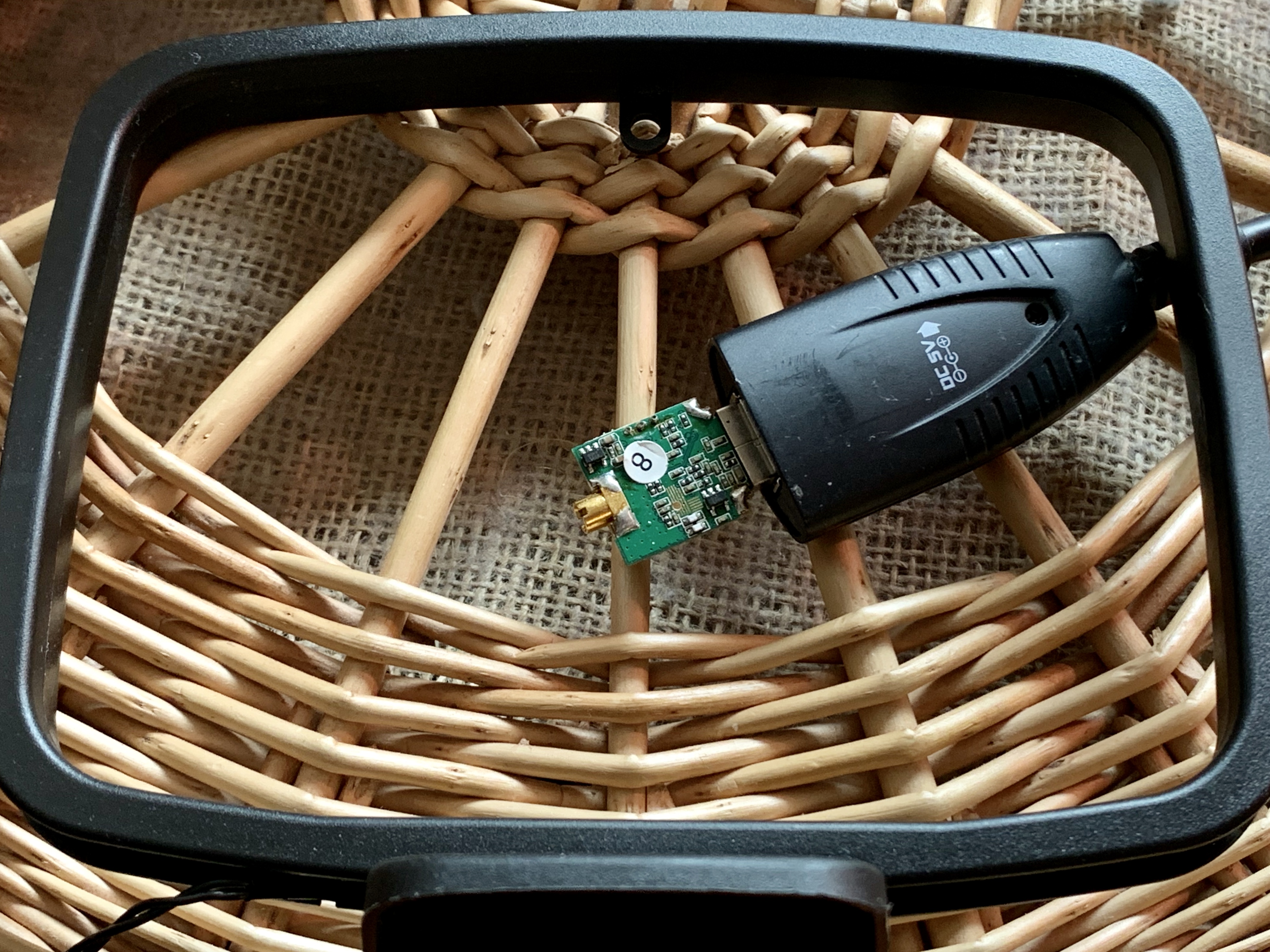
“Under the Loop” went:
NooElec SDR “Mini” – without it’s cheap plastic case (removed for cooling)
NooElec SDR “NESDR SMArt – Original metal case intact
NooElec SDR “Nano three” – Original metal case intact
RSPlay’s RSPdx – Original metal case intact
RaspberryPi 4 – Aluminum cooling grid installed, but no RF shield
External USB 3 HDD – Samsung 2TB 2,5″ HDD with plastic case
External USB 3 SSD – Kingston 256GB 2,5″ SSD with aluminum case
External USB 3 SSD – Samsung 256GB 2,5″ SSD with aluminum case
Results
Yes, I need to have metal mesh especially around RPi and external HDD’s, but it would not be that bad idea to have a metal mesh also around RTL-SDR dongles and even the RSPdx too as they seem to be quite noisy ones too.
Measurements were done so close to the device as possible – do note, that noise levels went dramatically down when I moved the antenna loop 20cm away from the device, so the metal mesh does not have to be a “military” grade EMP protection 🙂
1: Open USB 3 cable, no connected device
2: Open USB 3 cable, no connected device, cable wrapped around the loop
3: External 2,5″ HDD, plastic case, Drive software eject
4: External 2,5″ HDD, plastic case, Drive connected, spinning up and active
5: External 2,5″ SSD, aluminum case, Drive connected and active, model Kingston
6: External 2,5″ SSD, aluminum case, Drive connected and active, model Samsung
7: External 2,5″ SSD, aluminum case, Drive software eject, model Kingston
8: External 2,5″ SSD, aluminum case, Drive software eject, model Samsung
9: RPi 4 max load shutting down to standby
10: RPi 4 from bootup to running, no load
11: RPi 4 from standby to power cutoff
12: RSPdx 10M mode, max USB bandwith in use
13: RSPdx UNO started device active (Play)
14: RSPdx UNO device not active (stopped) uno closed
15: RSPdx UNO started, SDR activation
16: RSPdx plugged in, no UNO running
17: 1st Gen. NooElec dongle no plastic case
18: 2nd Gen. NooElec Dongle no plastic case
19: 3rd Gen. NooElec Dongle original metal case
20: 4th Gen. NooElec Dongle original metal case
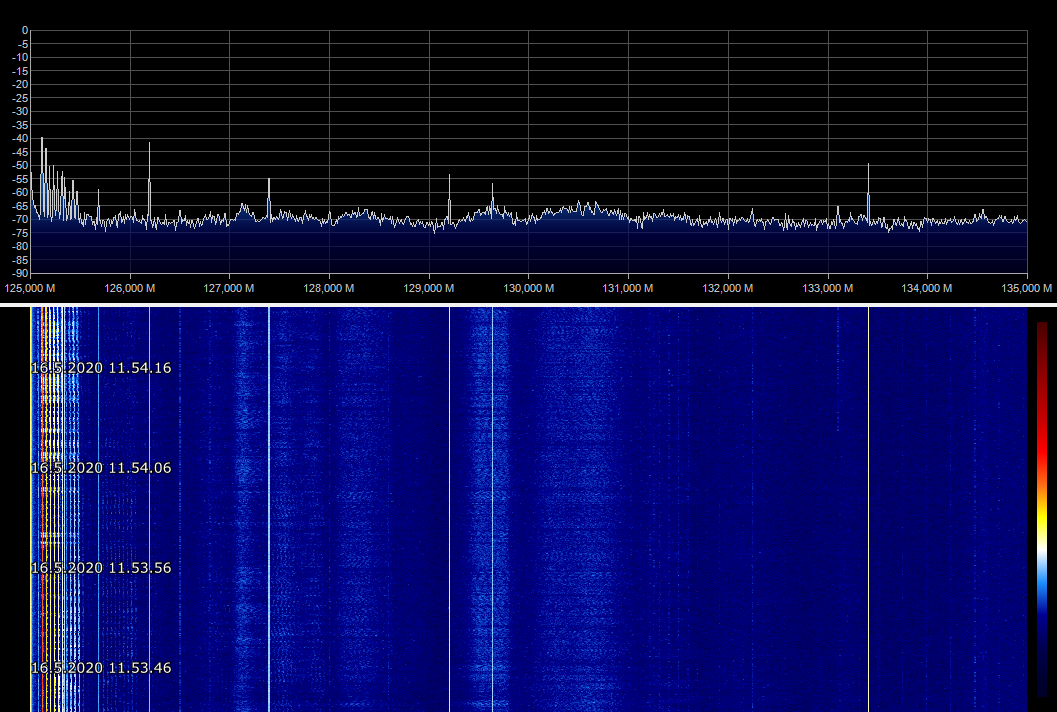
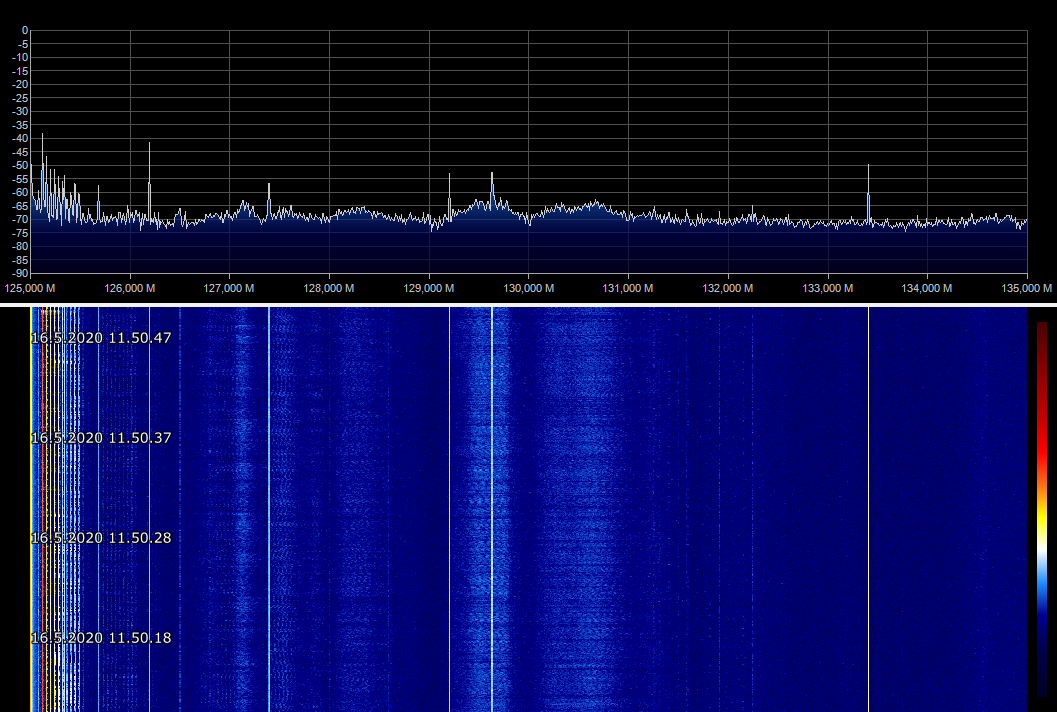
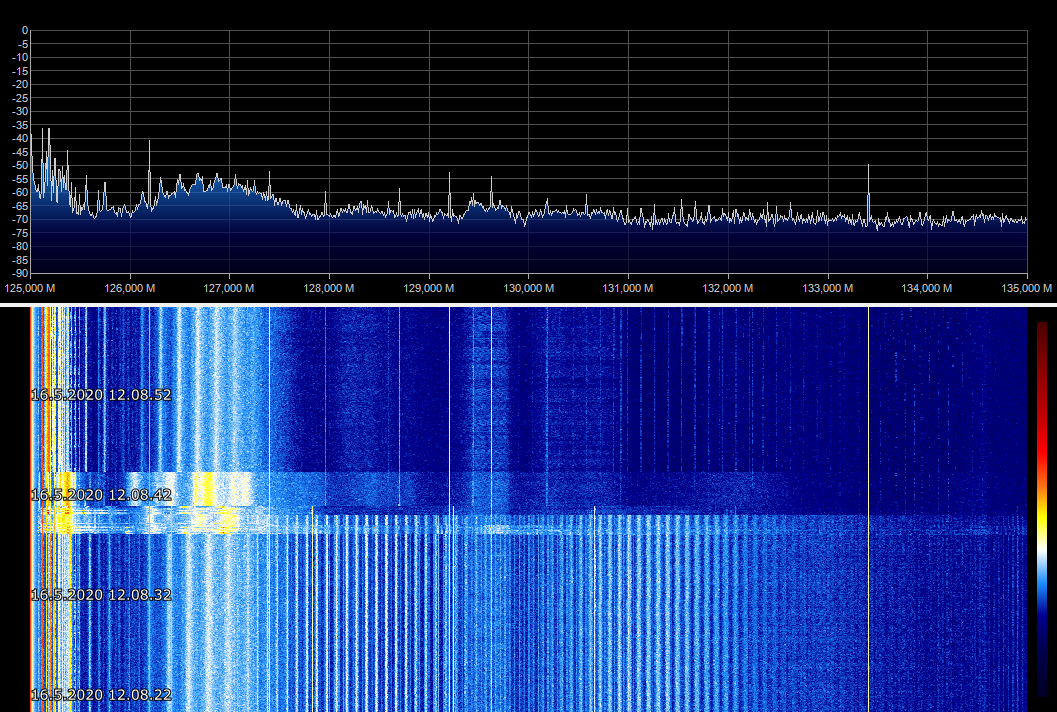
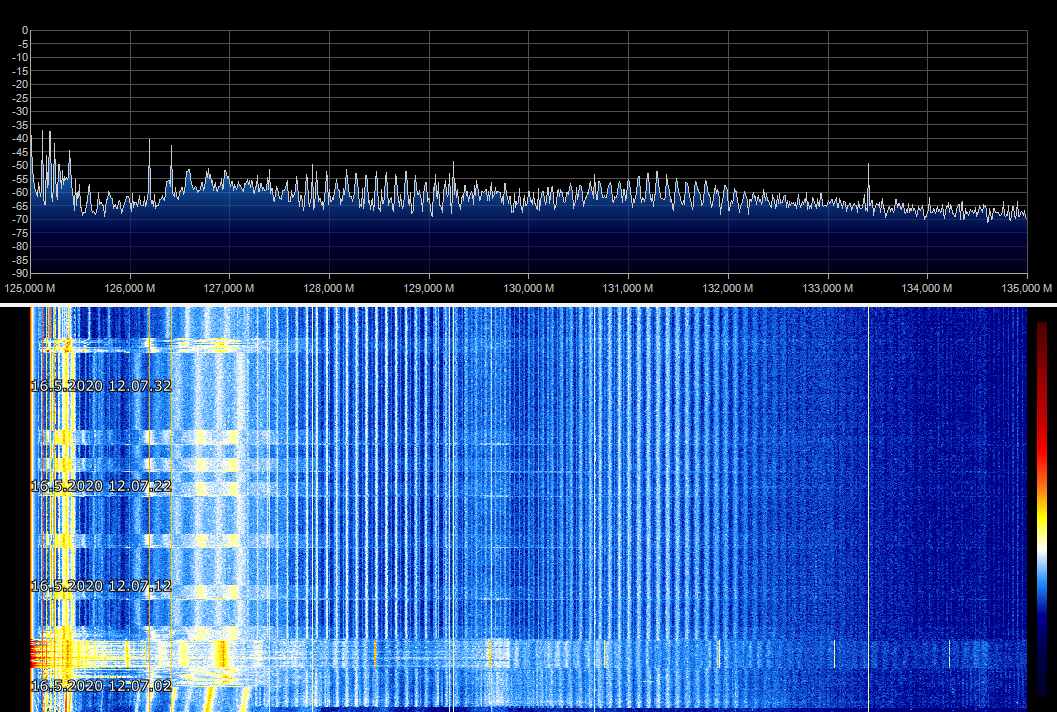
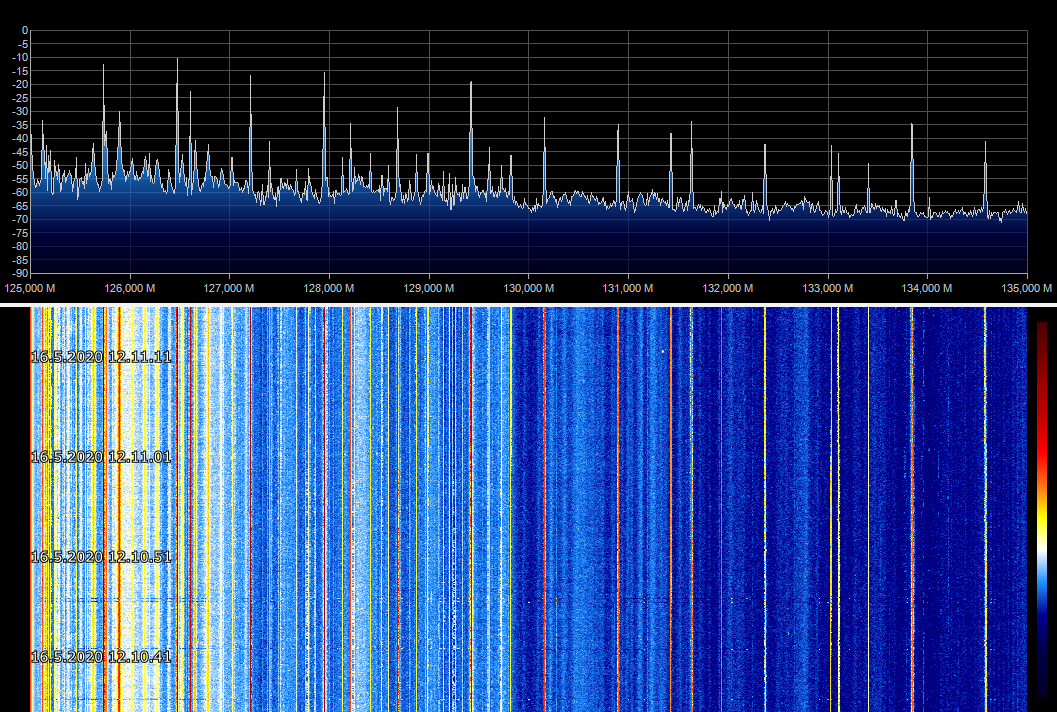
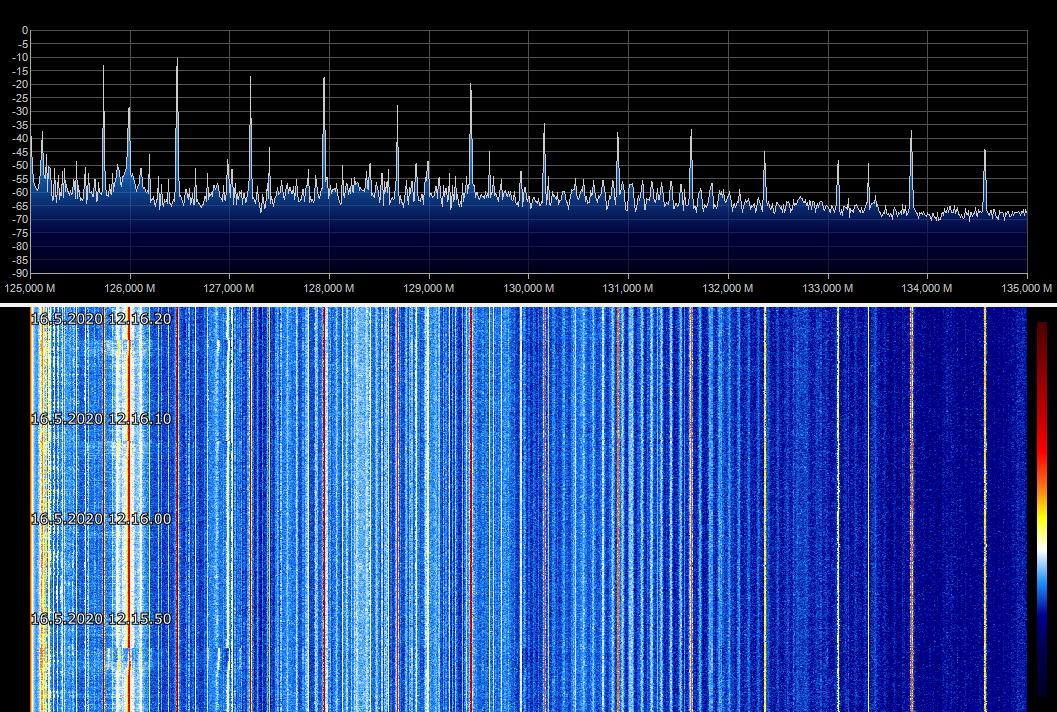
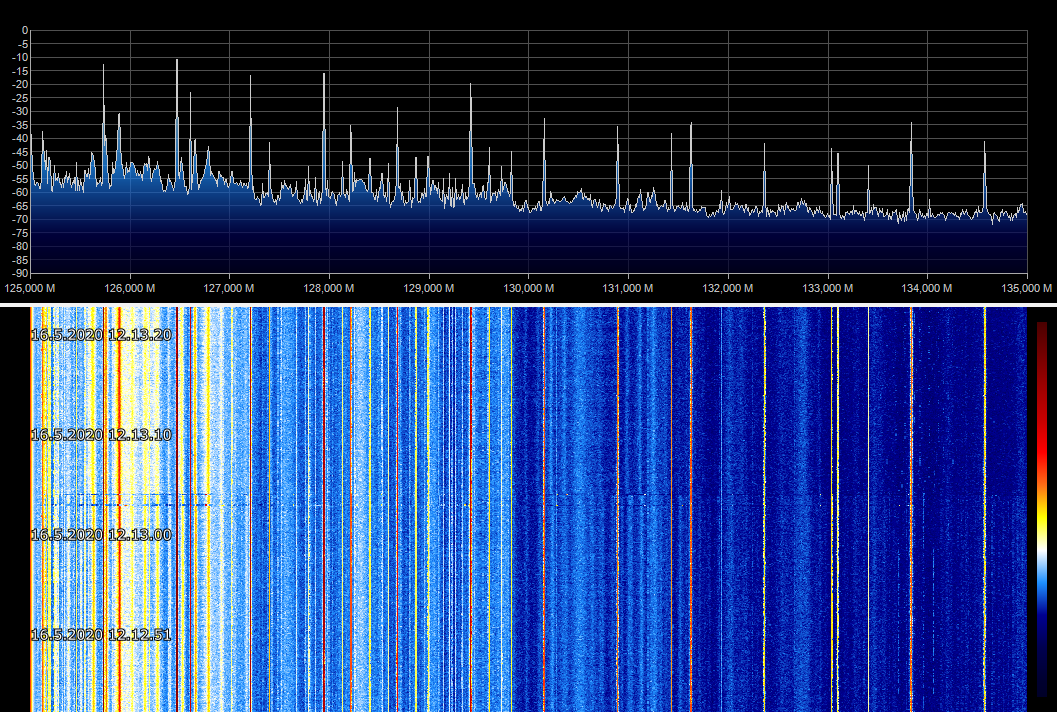
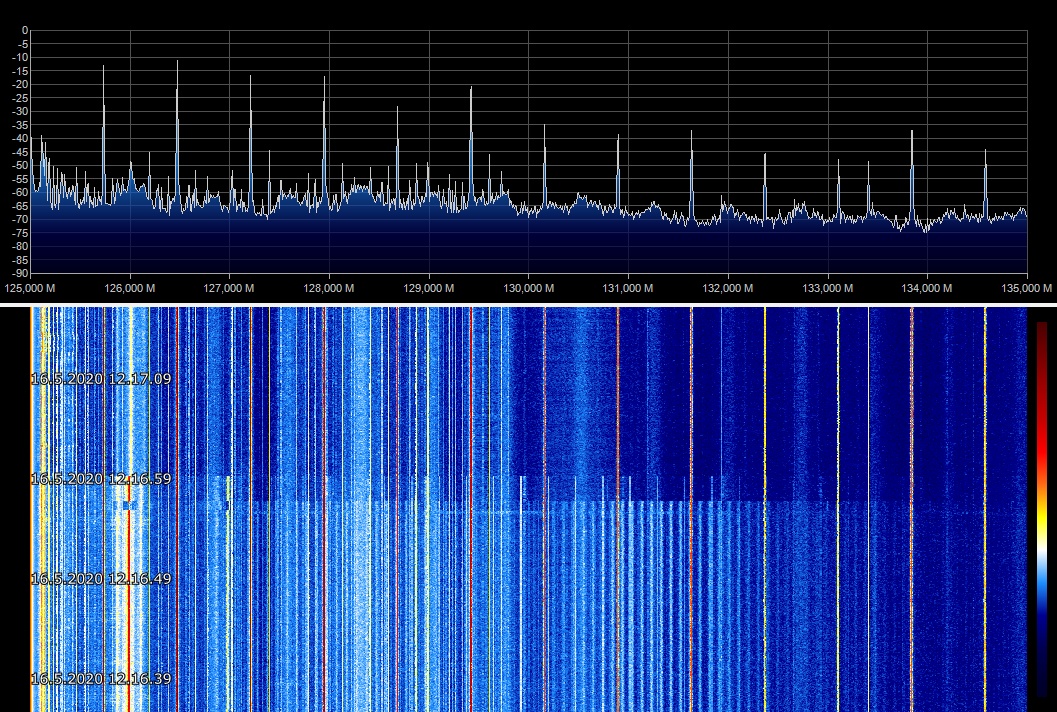
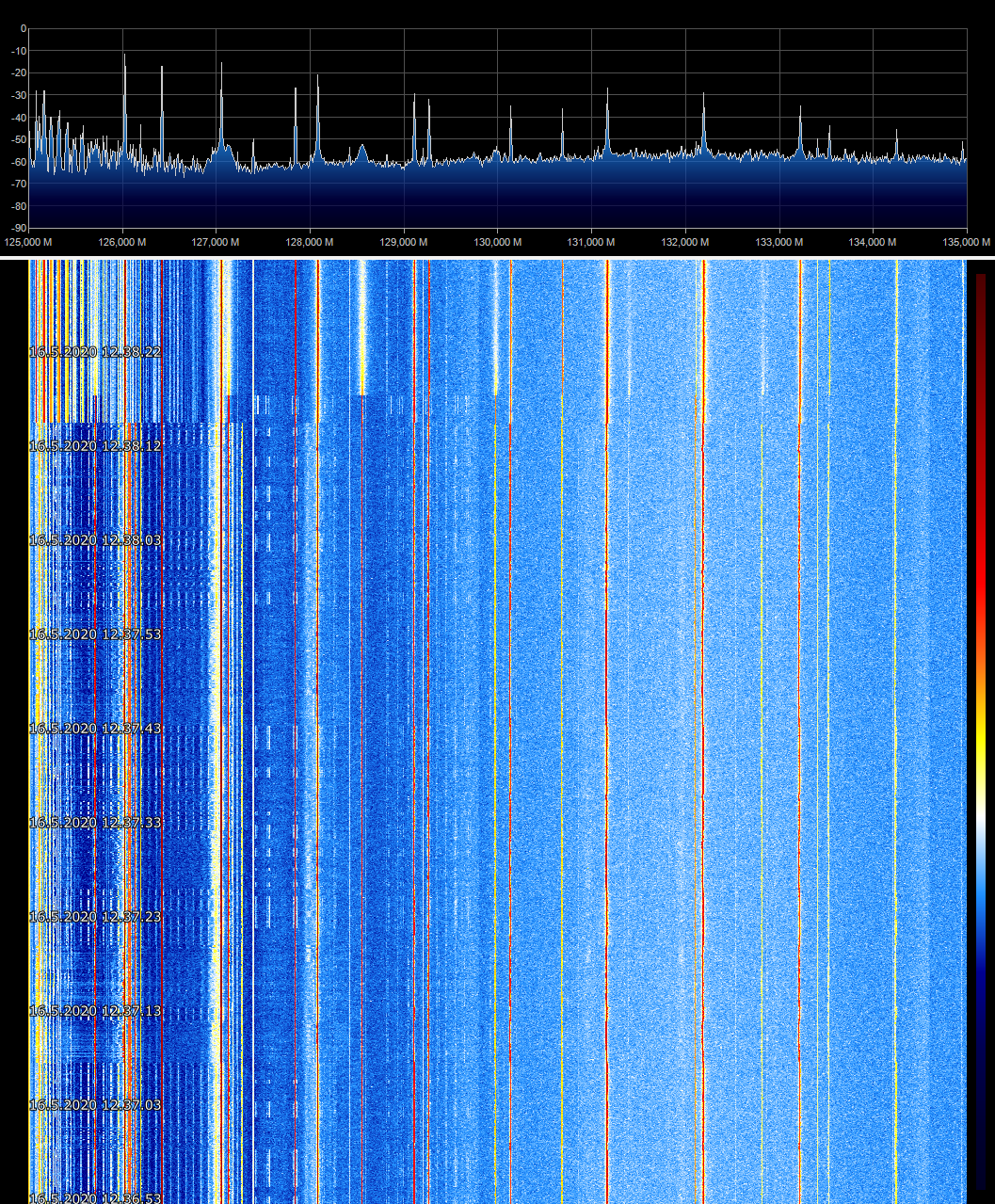
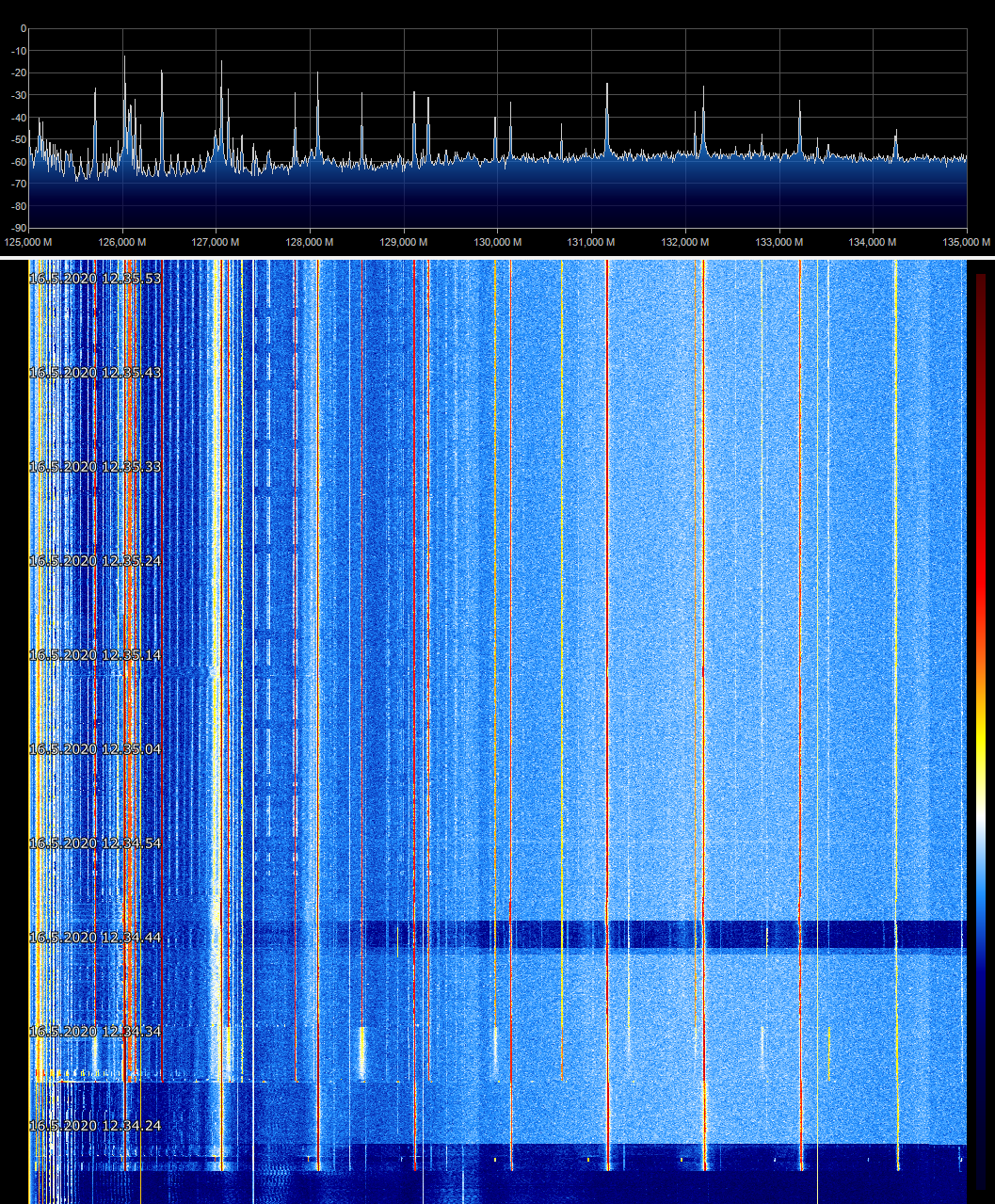
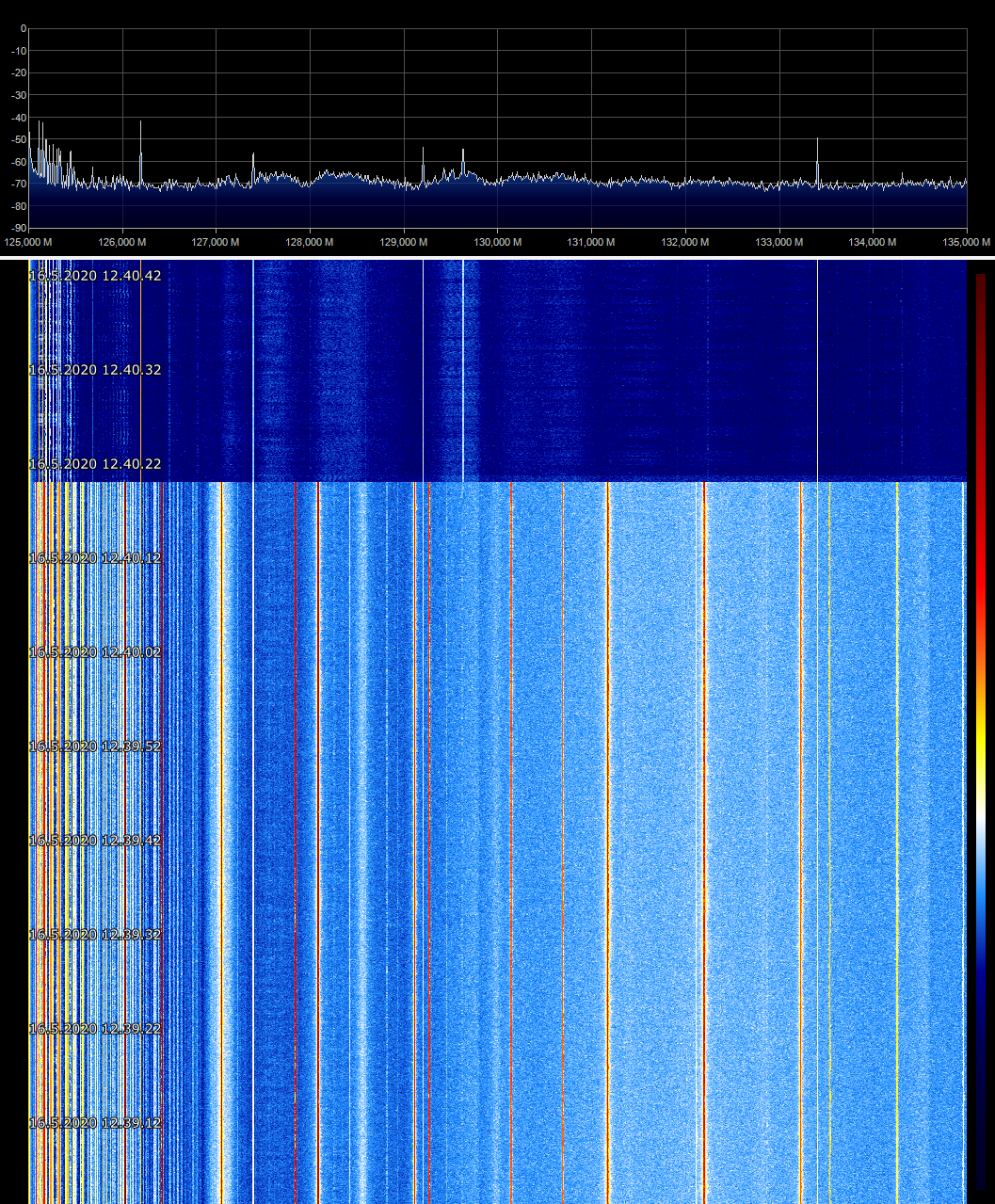
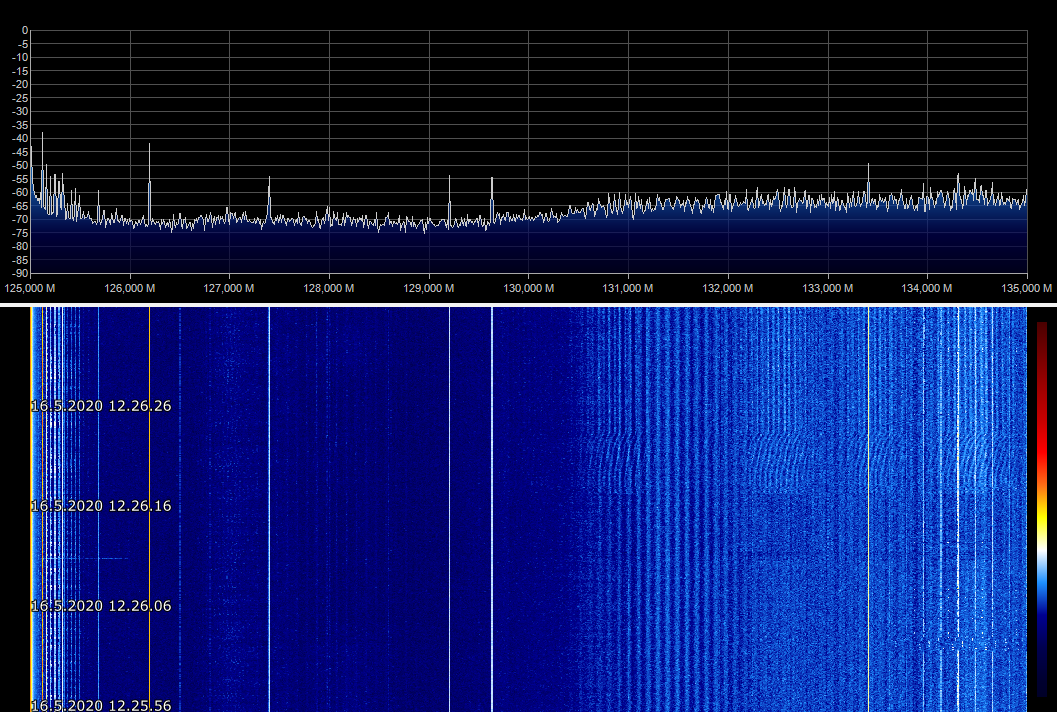
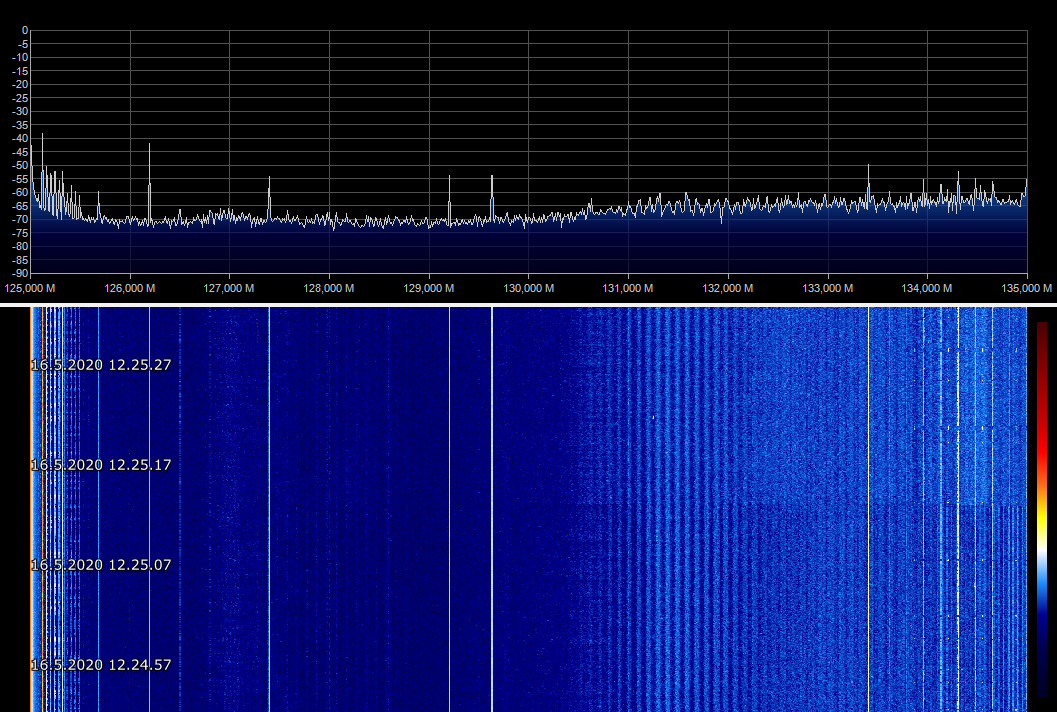
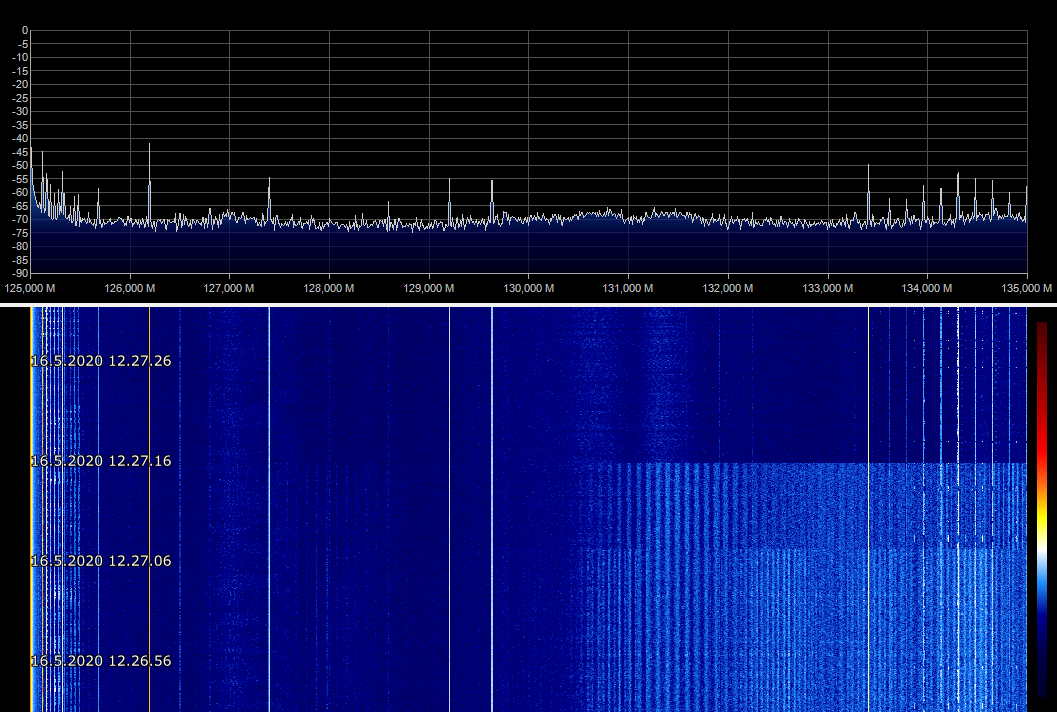
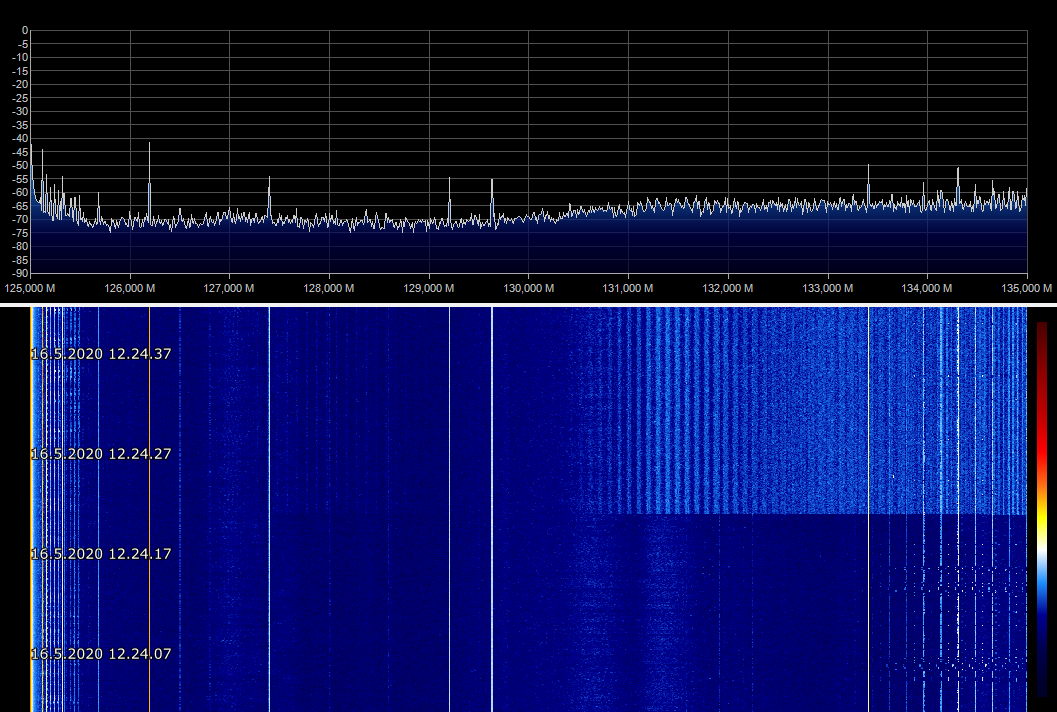
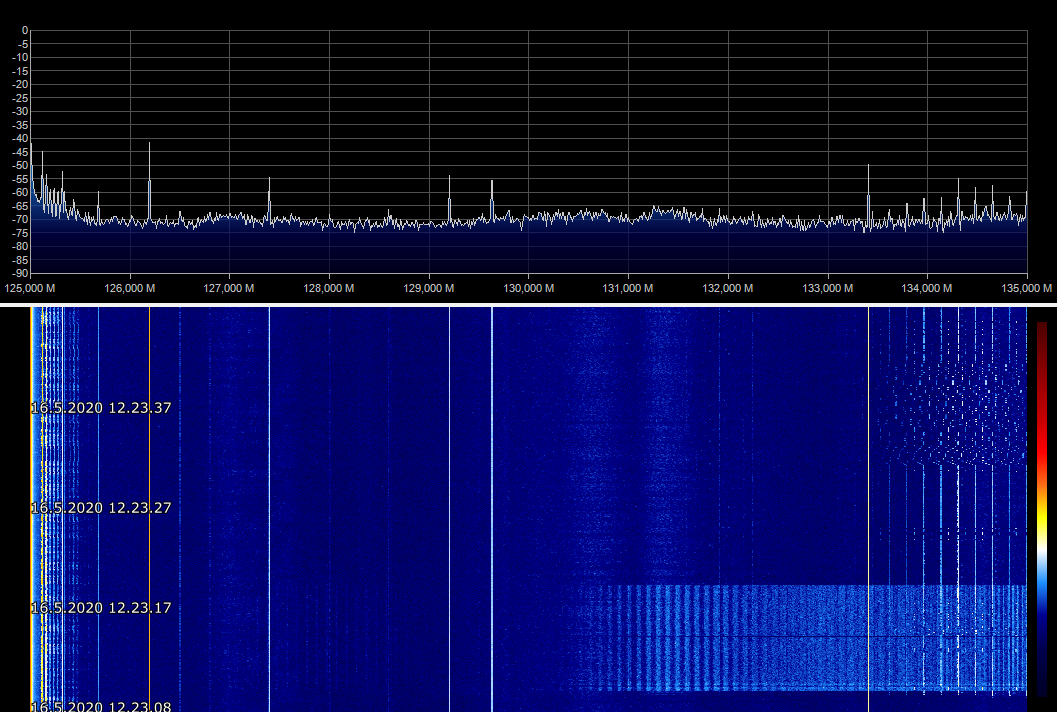
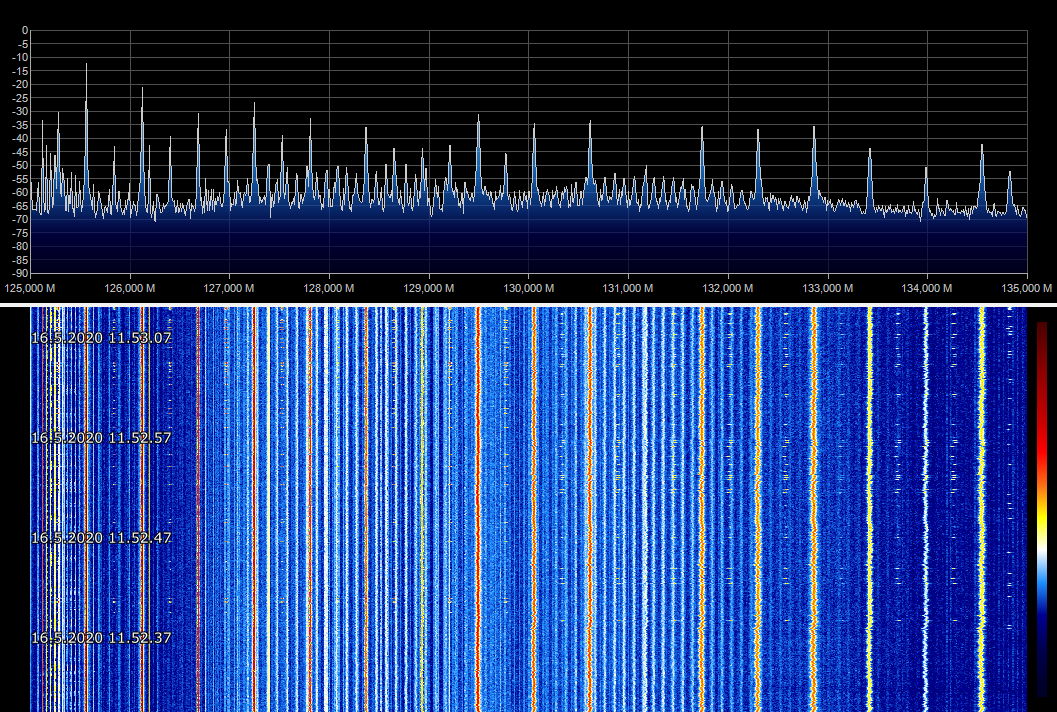
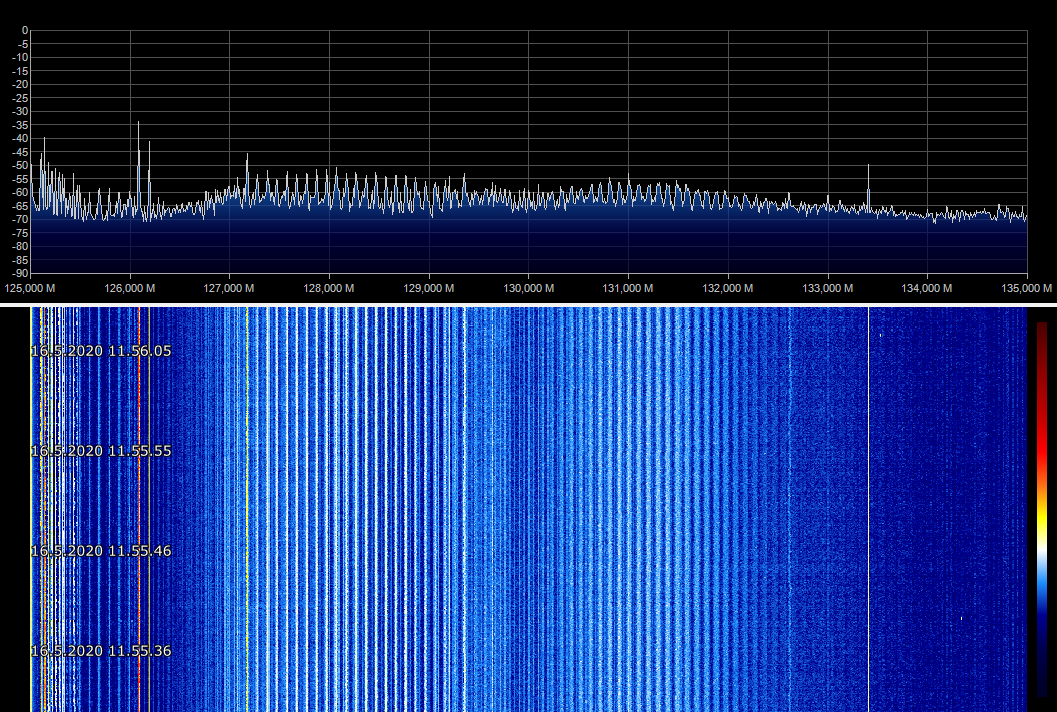
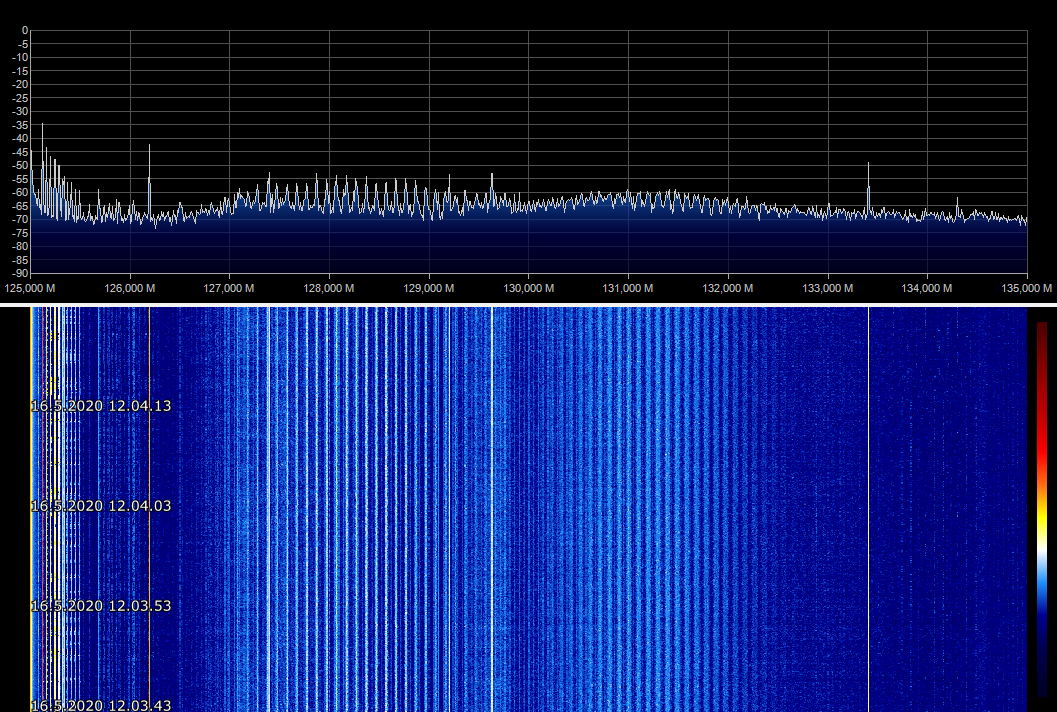
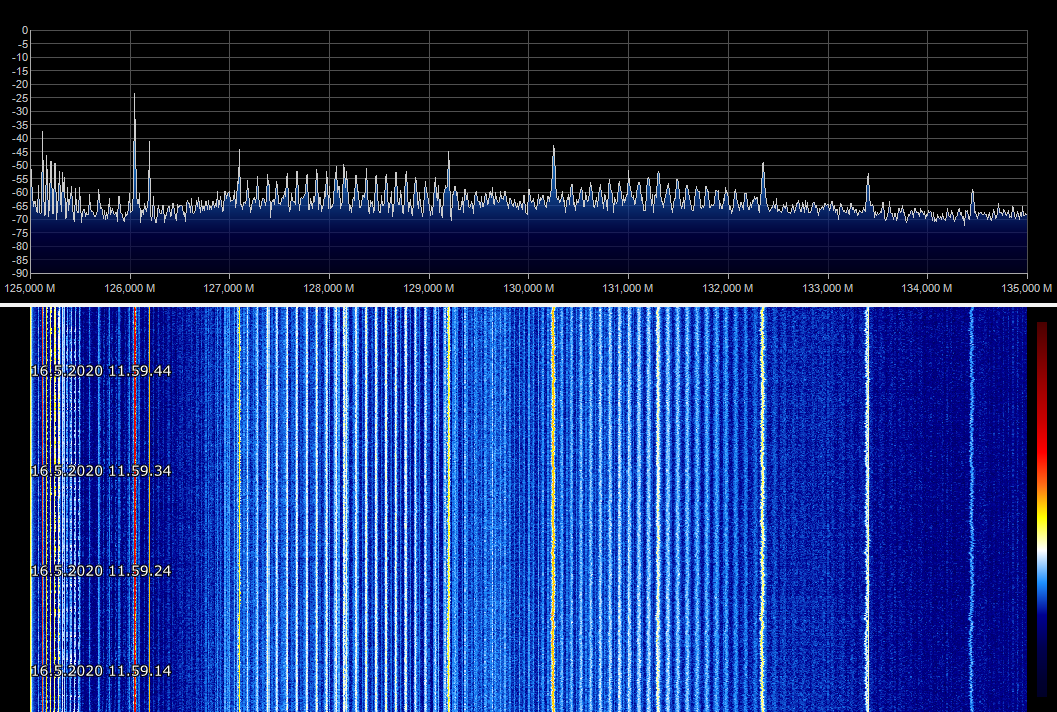
And the bonus measurement – The UPS
I need to install an UPS (Uninterrupted power supply) to my remote site as I need to have better protection against lightning, power grid interference and mains power loss. The internet connection is via 4G broadband radio modem, so I am able to connect to the remote site as long as there is still power on the operators radio tower and in my UPS battery.
UPS devices are terrible noise generators. What they do is that they rectify the mains 220v AC to DC, store spare power to battery for later use and for devices. To be able to react to the power line fluctuation, un-clean power grid electricity and total power loss in few milliseconds the UPS devices usually re-create the output to consumption devices using AC–>DC–>AC conversion. To achieve this these UPS are generally powerfull DC to AC inverters – and inverter is huge noise generator what comes to the VLF, HF bands. Usually the switching power system used in cheap inverters works around 100KHz up to 600KHz switch frequency. If you live near an solar plant you know what kind of interference an inverter can spread around if not well insulated and RF protected.
My UPS is a cheap Eaton model 3S 550 with plastic case – absolutely great device for uninterrupted power and noise! 🙂
So, how noisy the UPS is, lets find out! Loop next to the UPS and …
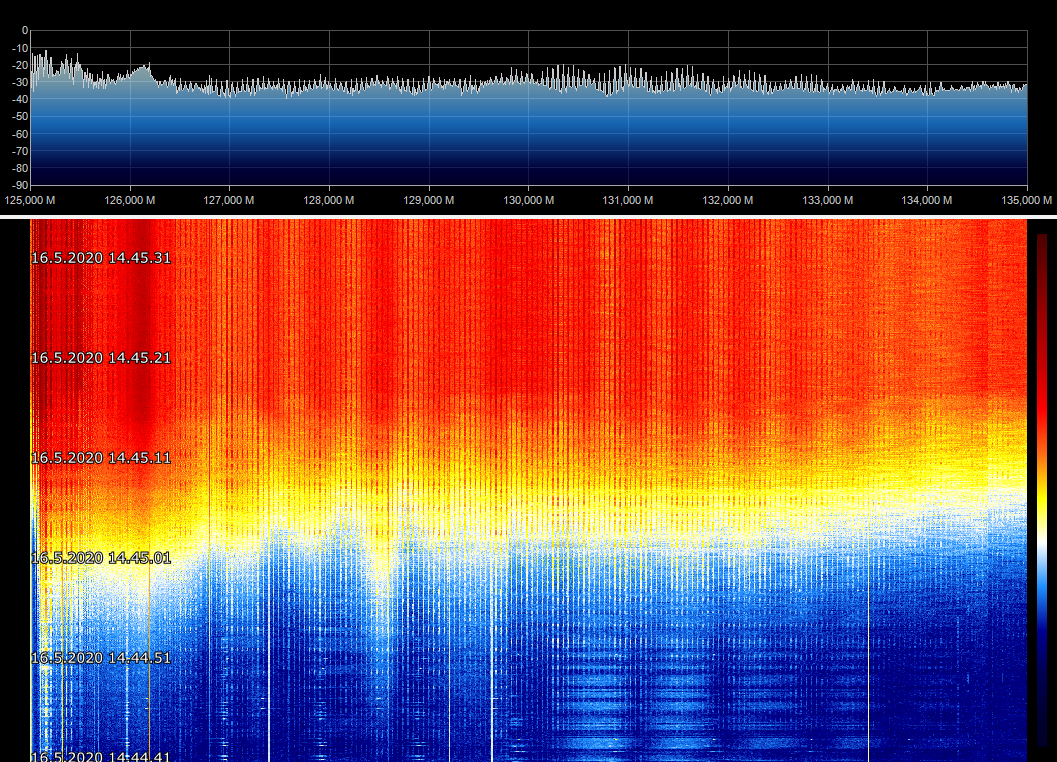
Well, yes – maybe I need to first protect the UPS and then go with the rest 🙂
The bottom part of the picture above is when the small loop antenna was 1 meter away from the UPS. I then slowly moved the loop closer to the UPS and the upper part of the picture is where the loop rest against the UPS case.
Final words
The system used in my measurement is not meant to be high tech absolute value deep level measurement, but a hobby level visualization of the RF interference present in the hobby level devices for remote site operator. Also it should be noted, that the interference of these devices goes dramatically down after some few meter away from the device itself.
In DX hobby the thing is to try to hear very fade signals all around the world, often signals that are even under the base noise of the band. With a good antenna and a good radio one is able to receive the signal of a “flies fart” from Japan, so when put into that perspective a noisy power supply few tens of meters away of the antenna could totally disable your DX station.